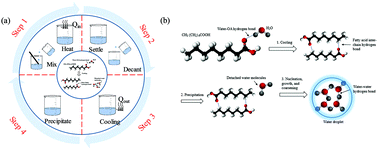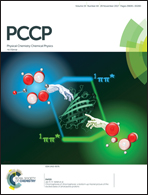Effect of cooling on droplet size in supersaturation-induced emulsions
Abstract
In this work, the droplet size in a water-in-oil emulsion obtained by supersaturation is studied. The emulsion is obtained by cooling down a saturated water/oil solution by a certain temperature difference. The effects of the cooling rate and temperature difference on the produced droplet size are experimentally investigated. The average size of water droplets in the emulsion is found to be proportional to the square root of the cooling rate. By analyzing the time scales of three different steps, including nucleation, droplet growth due to diffusion and coarsening, involved in the emulsification process, it is found that the time scales of nucleation and droplet growth due to mass diffusion are much smaller than the cooling time constant, which is much shorter than the coarsening time scale. A mechanism that links the cooling rate and supersaturation temperature to droplet size is proposed: the cooling rate influences the nucleation and thus droplet density, while the temperature difference, which is linearly proportional to the total volume of precipitated water from the saturated water-in-oil solution, determines the size of each droplet. The droplet size data were found to support this proposed mechanism well. The results obtained from this work may provide useful guidance on controlling the droplet size in the supersaturation-based emulsification process, which has a lot of practical relevance to many applications.

- This article is part of the themed collection: 2017 PCCP HOT Articles


 Please wait while we load your content...
Please wait while we load your content...